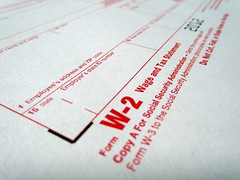
If your small business has reached the point where your self employment taxes are really hurting you, choosing an S Corporation status might be the answer to your problem.
If you own a single member LLC, the IRS considers that to be a “disregarded entity.” That basically means there’s no such thing as an LLC tax return. So, if you don’t make an “election” to taxed some other way, you’re taxed as a sole proprietor on your 1040 personal tax return. That means, you not only pay income tax on your LLC income, you also pay self employment tax on top of it. Ouch!
But as a disregarded entity, you may make an election to be taxed as an S corporation (or even a C corporation if you want to) instead of being a sole proprietor. So how do you know you might be ready to be an S Corp? Here’s my top three criteria:
1. Steady net income. If you have a loss on your business, that business loss can offset your other income on your tax return. One of the big benefits of an S corp is to reduce your self employment tax. If your business has a loss, you’re not paying self employment tax anyway so the S corp status wouldn’t provide much benefit there. A good rule of thumb, but certainly not a deal breaker, is to have a net income of about $50,000 to make the tax savings be greater than the additional cost of separate tax returns and payroll expenses. I work with business that have losses and still are S Corps. The $50K income isn’t a requirement, it’s just sort of a break even point on costs.
2. Separate Employer Identification Number (EIN) and bank account. If your business is set up as an LLC, you should have a separate EIN and a bank account for your business already. I’m always surprised by people who skip this step, but it’s important. You can get an EIN number for free, online. It takes about 5 minutes.
And you really need a separate bank account. You don’t want to co-mingle your business funds with your personal money.
3. Discipline to make monthly payroll deposits and quarterly reporting. One of the requirements of an S Corporation is that the owner has to pay him or herself a reasonable wage. That means, even if nobody else works for you, you still need to write yourself a paycheck and pay yourself like an employee. If you’re already making your quarterly estimated tax payments–you’re probably able to handle doing a payroll. If you’re scrambling every year, you can’t keep on schedule etc, then I say don’t do the S corp. Not being up to date on your estimated payments can be a problem, but the IRS can get really nasty if you’re behind on payroll tax deposits.
If you have no discipline, and your business easily has enough revenue to handle the payments–and still want to do the S Corp, then pay the extra money to hire a payroll company to do it for you.
Setting a reasonable wage is usually the most difficult thing to determine. You want to go by what a person in your line of work would get normally get paid, that’s not always easy to figure. You should probably have your wage be at least 1/3 of your net income unless you can document that people in your line of work usually make less.
Now, these are just my guidelines. There’s really no “set in stone” criteria for S Corp status. And really, before you make any change to the status of your business, what you really should do is run the numbers. Sit down with your tax professional and – using the most recent tax return – run the business numbers as if you were an S Corp, a C Corp, and as a sole proprietor. Don’t forget to include the costs of your payroll taxes when running the numbers.
Everybody’s situation is a little different. Compare your numbers side by see to see if changing to an S Corporation makes sense for your small business. That’s really the best way to tell.

